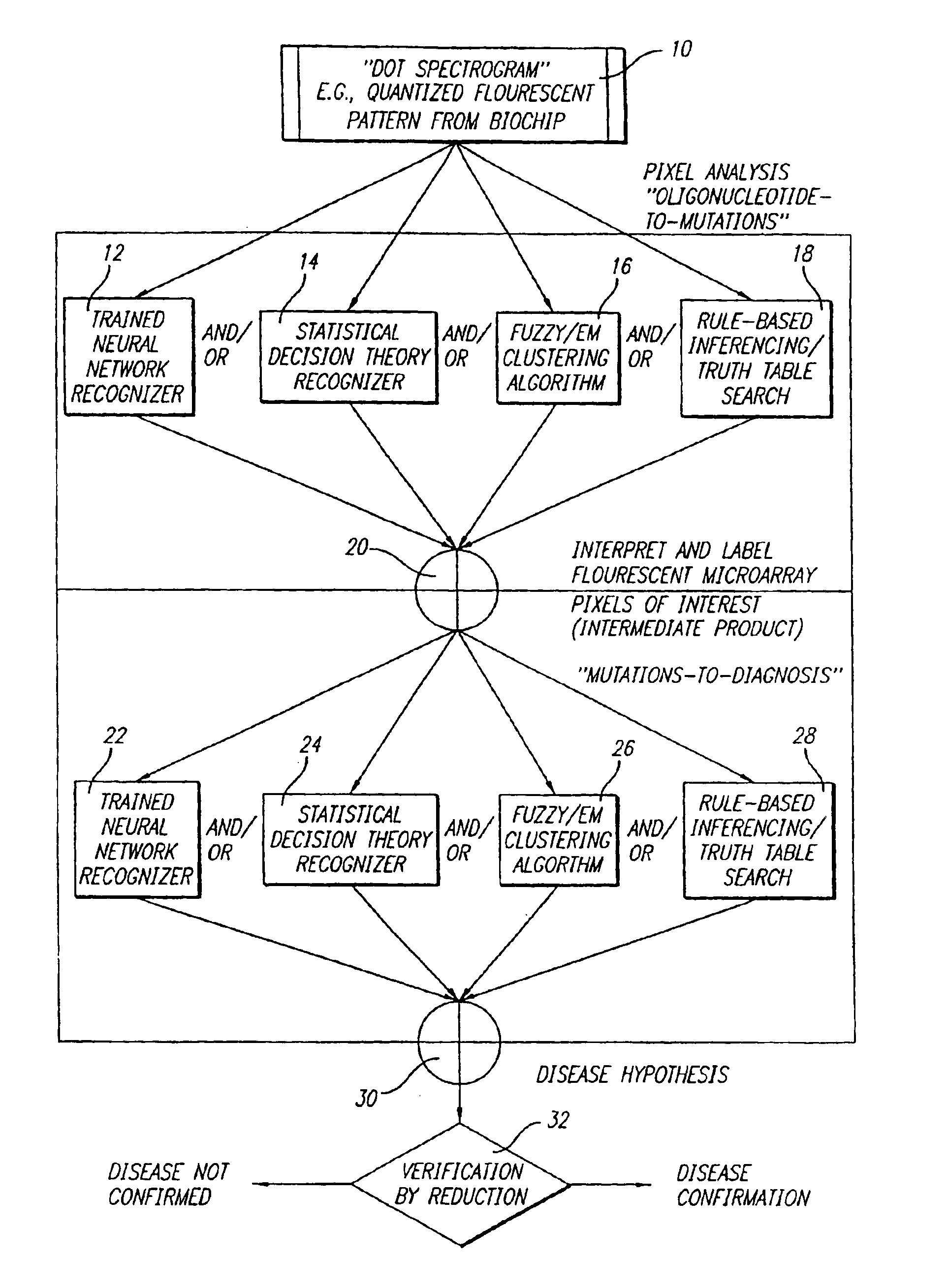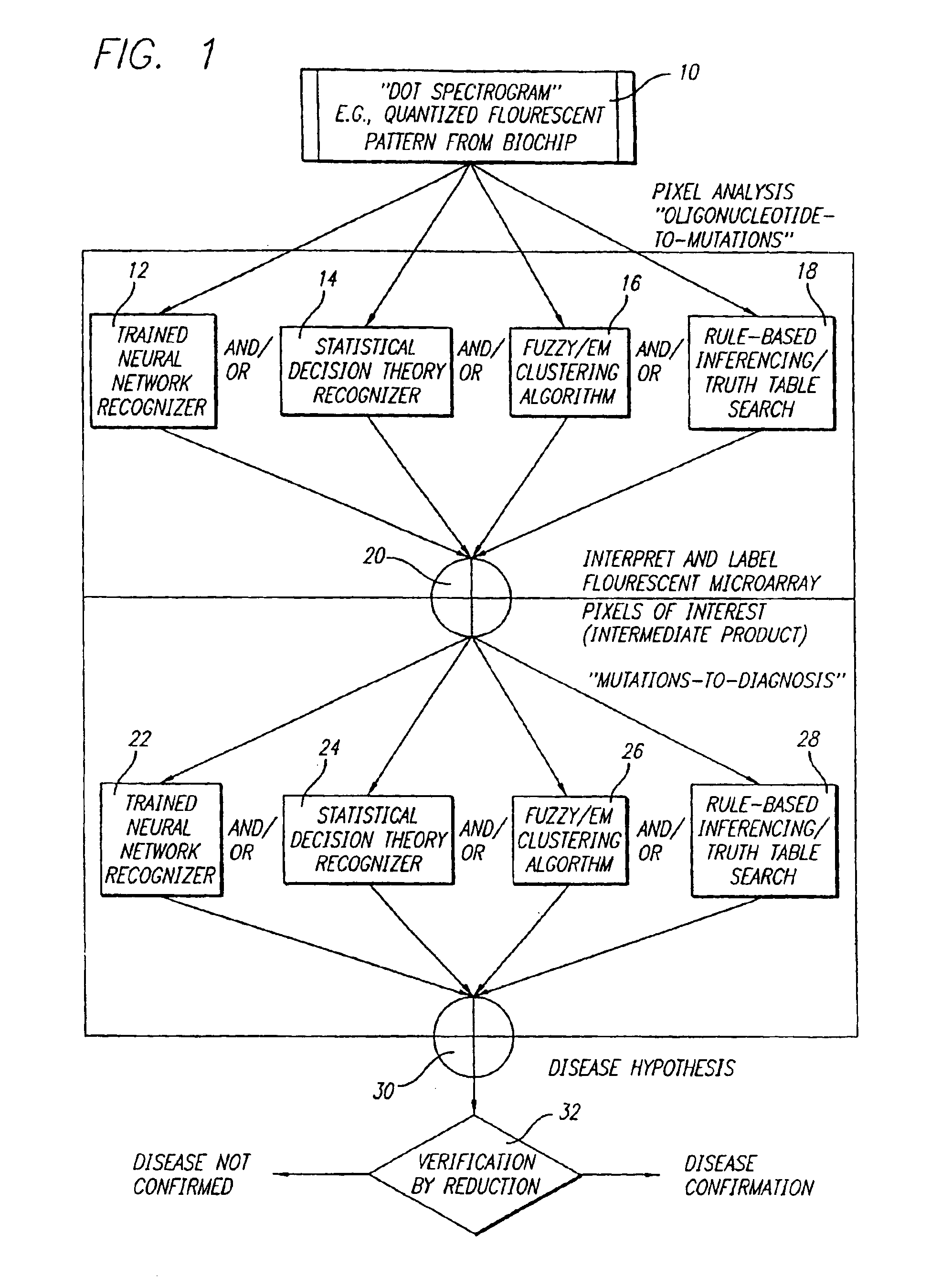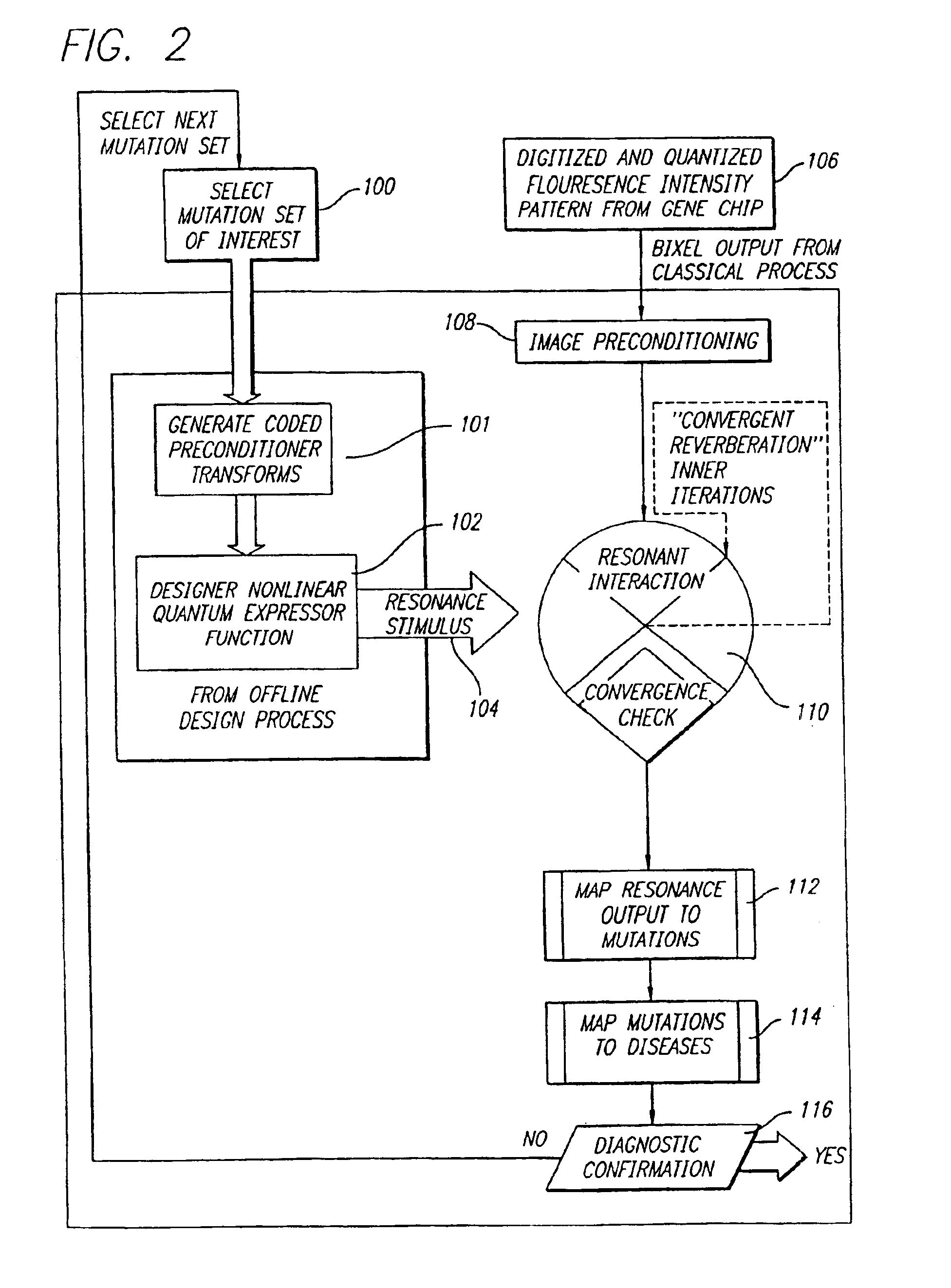Repeatable software-based active signal processing technique
a software-based active signal and software technology, applied in the field of biological sample analysis techniques, can solve the problems of poor repeatability, high cost, and time-consuming, and achieve the effect of enhancing the reliability of dot spectrogram analysis, high repeatability, and high degree of repeatability
- Summary
- Abstract
- Description
- Claims
- Application Information
AI Technical Summary
Benefits of technology
Problems solved by technology
Method used
Image
Examples
Embodiment Construction
[0050]With reference to the remaining figures, exemplary embodiments of the method of the co-pending application and of the present invention will now be described. The exemplary methods will be described primarily with respect to the analysis of mutation signatures within output patterns of DNA biochip microarrays, but principles of the invention to the analysis of a wide variety of other patterns as well.
[0051]Overview of Co-Pending Application
[0052]Briefly, the exemplary method of the co-pending application exploits, among other features: (a) a novel representation, interpretation and mathematical model for the immobilized oligonucleotide hybridization patterns, represented via a dot spectrogram; (b) a new “active” biomolecular target detection and discrimination method based on quantum resonance interferometry, and (c) a new spatial hashing function that yields accurate diagnostic assessment.
[0053]To this end the exemplary method of the co-pending application exploits a fundamen...
PUM
| Property | Measurement | Unit |
|---|---|---|
| convergence time | aaaaa | aaaaa |
| interferometric signal processing | aaaaa | aaaaa |
| resonance interferometry | aaaaa | aaaaa |
Abstract
Description
Claims
Application Information
 Login to View More
Login to View More - R&D
- Intellectual Property
- Life Sciences
- Materials
- Tech Scout
- Unparalleled Data Quality
- Higher Quality Content
- 60% Fewer Hallucinations
Browse by: Latest US Patents, China's latest patents, Technical Efficacy Thesaurus, Application Domain, Technology Topic, Popular Technical Reports.
© 2025 PatSnap. All rights reserved.Legal|Privacy policy|Modern Slavery Act Transparency Statement|Sitemap|About US| Contact US: help@patsnap.com



